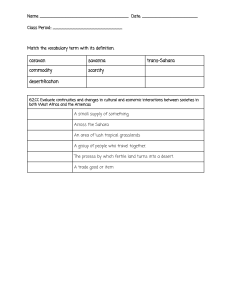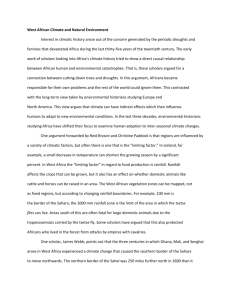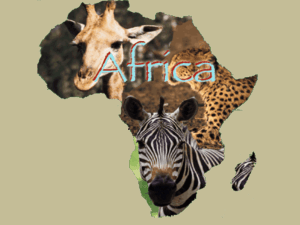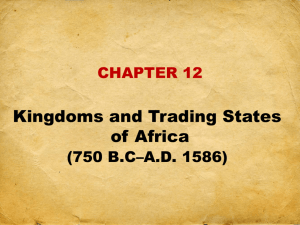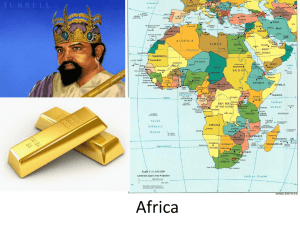West African Climate and Natural Environment Interest in climatic
advertisement
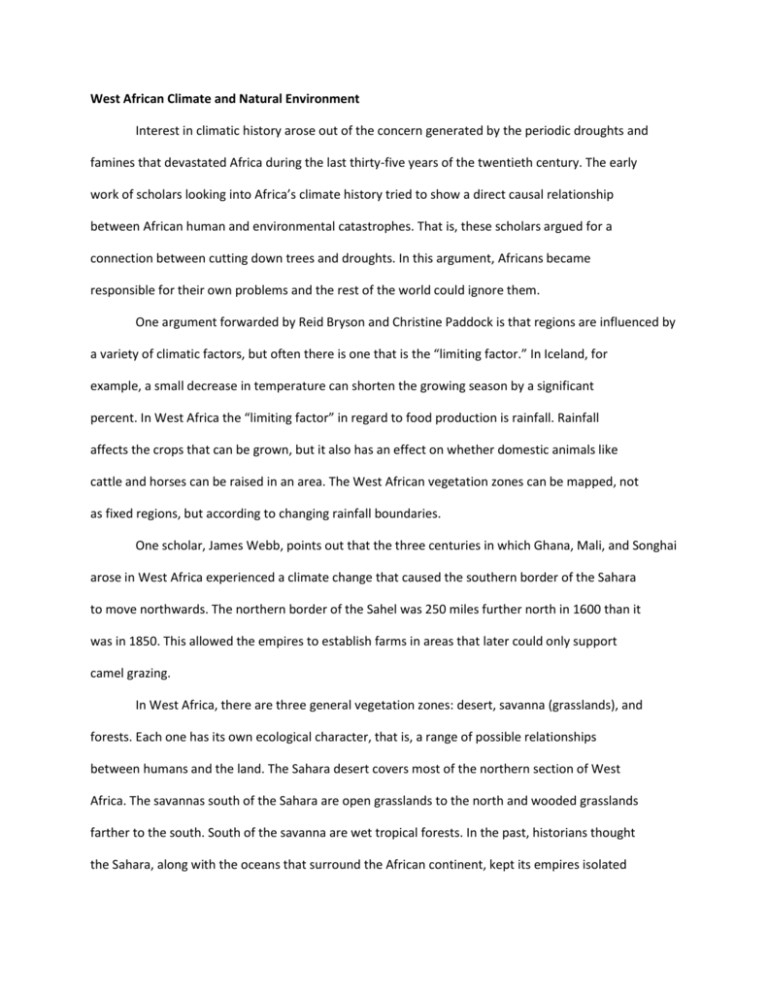
West African Climate and Natural Environment Interest in climatic history arose out of the concern generated by the periodic droughts and famines that devastated Africa during the last thirty-five years of the twentieth century. The early work of scholars looking into Africa’s climate history tried to show a direct causal relationship between African human and environmental catastrophes. That is, these scholars argued for a connection between cutting down trees and droughts. In this argument, Africans became responsible for their own problems and the rest of the world could ignore them. One argument forwarded by Reid Bryson and Christine Paddock is that regions are influenced by a variety of climatic factors, but often there is one that is the “limiting factor.” In Iceland, for example, a small decrease in temperature can shorten the growing season by a significant percent. In West Africa the “limiting factor” in regard to food production is rainfall. Rainfall affects the crops that can be grown, but it also has an effect on whether domestic animals like cattle and horses can be raised in an area. The West African vegetation zones can be mapped, not as fixed regions, but according to changing rainfall boundaries. One scholar, James Webb, points out that the three centuries in which Ghana, Mali, and Songhai arose in West Africa experienced a climate change that caused the southern border of the Sahara to move northwards. The northern border of the Sahel was 250 miles further north in 1600 than it was in 1850. This allowed the empires to establish farms in areas that later could only support camel grazing. In West Africa, there are three general vegetation zones: desert, savanna (grasslands), and forests. Each one has its own ecological character, that is, a range of possible relationships between humans and the land. The Sahara desert covers most of the northern section of West Africa. The savannas south of the Sahara are open grasslands to the north and wooded grasslands farther to the south. South of the savanna are wet tropical forests. In the past, historians thought the Sahara, along with the oceans that surround the African continent, kept its empires isolated from other civilizations. They also thought the abundant natural resources in Africa were unchanging. The actual situation is more complicated. Over the past several hundred thousand years, the southern Sahara has varied in size and amount of precipitation. Changes in rainfall influenced the pattern of human migration and agriculture. While precious minerals like gold are found in the savanna and forest areas of West Africa, people had limited access to salt, a requirement for human survival. It had to be traded in from salt beds along the southern or western seacoasts or from mines in the Sahara. Such variations in natural resources of course encouraged regional trade. The West African kingdoms of Ghana, Mali, and Songhai were able to grow and prosper due to their location and control of transregional trade routes. The introduction of camels for trans-Saharan transport early in the first millennium CE greatly expanded the potential of trade between West Africa and Mediterranean North Africa. A challenge was provided by the ocean currents on the Atlantic coast of West Africa. While eastern African communities could take advantage of the monsoon winds to engage in trade across the Indian ocean, the Atlantic winds and currents flowed consistently southward, making African maritime exploration to the north more difficult.
